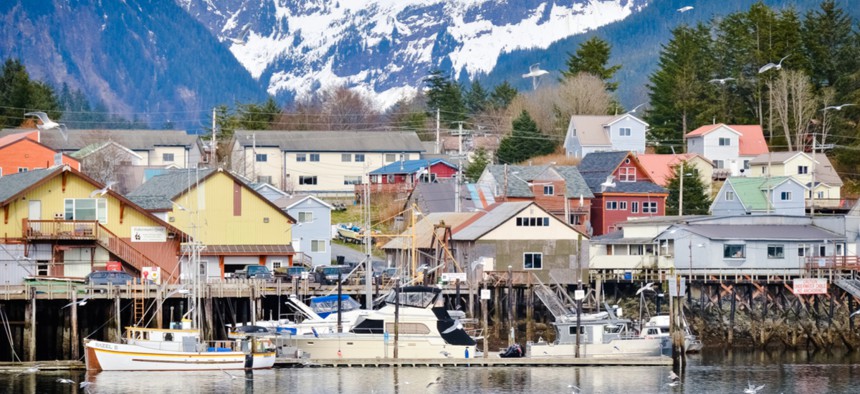Developing a Talent Pipeline in a Geographically Isolated Economy

Sitka, Alaska Shutterstock
2018 NAVIGATOR AWARD WINNER: Alaska State Rep. Jonathan Kreiss-Tomkins, District 35
This is the the sixth in a series of profiles on the 10 winners of the 2018 Route Fifty Navigator Awards.
Rural economic development can be challenging in many parts of the U.S. but the geographic isolation of southeastern Alaska presents its own special set of circumstances for state and local leaders to deal with. The 35th State House district, which includes the city and borough of Sitka, spans numerous island communities off the coast of North America. The portion of the district that is actually on the mainland is cut off by impenetrable mountains and glacial fields.
While local economies usually rely on traditional physical connections of moving goods and people in and out of a region, there’s no easy way to do that in the district that Jonathan Kreiss-Tomkins represents in the state legislature.
In places like Angoon, Hoonah, Petersburg, Sitka and Tenakee Springs, economic and community resiliency is even more reliant on the strength and vitality of its residents and small businesses than it is on the physical connections that most people in the Lower 48 take for granted.
In a recent interview with Route Fifty, Kreiss-Tomkins, a long-distance runner and avid outdoorsman first elected to the state House in 2012 at age 23 after dropping out from Yale—he was re-elected to another term last week—said that means developing the next generation of fishermen.
“It’s huge,” the Democratic state representative said of fishing. “It’s the No. 1 industry. And it’s decentralized … There are 700 to 1,000 active fishing vessels in Sitka, and that means there are 700 to 1,000 small businesses.”
Fishing is not an easy life but “they can work hard and make an honest living,” Kreiss-Tomkins said. “I’ve been looking very very hard at the barriers to pathways to entry into the industry.”
That’s means figuring out ways to connect the next generation of fishermen with things like bridge financing while cutting red tape and regulations.
While fishing and maritime services are critically important to the local economy of southeastern Alaska, Kreiss-Tomkins has been particularly focused on fostering the next generation of leaders, entrepreneurs and small business owners not just in his district but elsewhere in Alaska.
He’s been involved in supporting The Sustainable Southeast Partnership, a coalition of organizations across southeastern Alaska aimed at building more resilient communities and supporting young prospective business owners through entrepreneurship bootcamp events.
“It’s incredibly gratifying because many have led to brick-and-mortar businesses,” he said. “I’m thrilled to patronize them as well” once they’re up and running.
Five years ago, Tomkins also helped launch the Alaska Fellows Program, which connects young professionals with jobs in state and local governments, non-profit groups and other organizations in Sitka, Anchorage and Juneau.
The program started initially with Yale graduates and has since grown to include other schools, mostly through word of mouth. “It’s been so fun to see the program grow over the last five years.”
While the Alaska Fellows Program has brought young professionals from the Lower 48 to the Last Frontier—many who have stayed in Alaska beyond their fellowship—it’s also an opportunity for younger people who left the state for opportunities elsewhere to make a homecoming. “The alumni are really putting in roots and doubling down in their investment in the state. The impact will compound in the years to come,” he said.
And in a state currently feeling the fiscal pain of shifts in the global energy market, developing a diversified economy is even more important than ever. But doing that means developing human capital first and foremost. “That talent pipeline is so critically important in a state that doesn’t necessarily have the pull that San Francisco or Brooklyn might have,” he said.
Michael Grass is Executive Editor of Route Fifty and is based in Seattle.
NEXT STORY: More Than 200 Still Missing as Wildfire Death Toll Rises in Northern California






